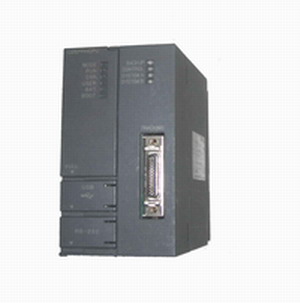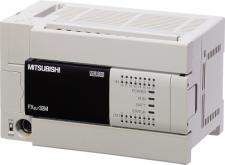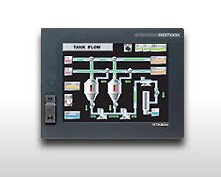步進(jìn)電機(jī)的應(yīng)用
2011/8/4 10:35:00
步進(jìn)電機(jī)具有明顯的優(yōu)勢(shì)超過(guò)其他電動(dòng)機(jī),這些優(yōu)勢(shì)與精密控制有關(guān),以及其相對(duì)較低的成本,步進(jìn)電機(jī)有許多高科技技術(shù)應(yīng)用在程序上,如機(jī)器人和遙控車等等。
什么是步進(jìn)電機(jī)
步進(jìn)電機(jī)是在電機(jī)中一個(gè)要對(duì)較新的現(xiàn)象,只是最早的電機(jī)只是用電線線圈,磁鐵的存在,隨即與電流。步進(jìn)電機(jī)推出精確的速度和通過(guò)使用微處理器控制電機(jī)的位置。由于電機(jī)的移動(dòng)位置步驟位置,電機(jī)成為被稱為“步進(jìn)電機(jī)”。
步進(jìn)電機(jī)的應(yīng)用
步進(jìn)電機(jī)的允許電機(jī)同步,這可能不是什么大不了的,似乎直到你意識(shí)到有許多這樣的電機(jī)應(yīng)用。步進(jìn)電機(jī)控制器的同步,使工廠能夠精確地控制電機(jī)所產(chǎn)生的流量或輸出,使機(jī)器人移動(dòng)精確,并允許控制和定位的東西如相機(jī)。它也是用于轉(zhuǎn)速控制。使用步進(jìn)電機(jī)的另一種方法是在遠(yuǎn)程控制的應(yīng)用。
為什么要使用步進(jìn)電機(jī)?
如直流無(wú)刷電機(jī),其他電機(jī)不提供罰款的步進(jìn)電機(jī)控制。但是,他們也有對(duì)步進(jìn)電機(jī)的一個(gè)優(yōu)勢(shì)是其成本較低。其他電機(jī)也有不要求其控制的微處理器,增加的復(fù)雜性,可以建立企業(yè)和愛(ài)好者的停機(jī)時(shí)間和費(fèi)用的額外的好處。
成本和效率
即使步進(jìn)電機(jī)因?yàn)樗婕暗脑S多磁崗位,從而招致更大的成本為用戶使用更多的電力,磁鐵高未必是一件壞事,因?yàn)樗麄冞€創(chuàng)造一個(gè)更強(qiáng)大的高轉(zhuǎn)矩電機(jī),在低角速度。這使得許多愛(ài)好者的應(yīng)用非常有用的電機(jī),特別是對(duì)自動(dòng)化系統(tǒng)和機(jī)器人的建設(shè)者。機(jī)器人的制造商傾向于這種類型的電機(jī),因?yàn)樗试S對(duì)的位置和移動(dòng)速度的精確控制,并且很容易由一個(gè)微處理器控制的
原文:
Stepper motors have distinct advantages over other motors. These advantages are linked to precision control factors as well as their relatively low cost. Stepper motors have many applications in both high technology and in hobbies such as robotics and remote cars.
What Are Stepper Motors?
Stepper motors are a relatively new phenomena in the world of motors. The earliest motors were merely coils of wire with an electric current that spun in the presence of a magnet. Stepper motors introduced precise speed and control of the motor position through the use of microprocessors. Since the motor moves from location to location in steps, the motor became known as the "stepper motor."
Applications
The stepper motor allows synchronization of a motor, which may not seem like a big deal until you realize that there are numerous applications for such a motor. The synchronization of a stepper motor controller allows factories to precisely control the flow or output produced by a motor, allows robots to move with precision, and allows control and positioning of things like cameras. It also is used for rotational speed control. Another way to use stepper motors is in remote-controlled applications.
Why Use a Stepper Motor?
Other motors, such as the brushless DC motor, do not offer the fine control of the stepper motor. But one advantage that they do have over stepper motors is their lower cost. Other motors also have the added advantage of not requiring a microprocessor for their control, as the added complexity can create downtime and expense for businesses and hobbyists.
Cost and Efficacy
Even though stepper motors use more electricity because of the numerous magnetic positions involved, and thus incur a greater cost for the user, the high number of magnets isn't necessarily a bad thing because they also create a more powerful, high torque motor at low angular velocities. This makes the motor useful for many hobbyist applications, especially for builders of automated systems and robots. Builders of robots tend to favor this type of motor because it allows precise control over the position and speed of movement, and is easily controlled by a microprocessor (see Resources below).
什么是步進(jìn)電機(jī)
步進(jìn)電機(jī)是在電機(jī)中一個(gè)要對(duì)較新的現(xiàn)象,只是最早的電機(jī)只是用電線線圈,磁鐵的存在,隨即與電流。步進(jìn)電機(jī)推出精確的速度和通過(guò)使用微處理器控制電機(jī)的位置。由于電機(jī)的移動(dòng)位置步驟位置,電機(jī)成為被稱為“步進(jìn)電機(jī)”。
步進(jìn)電機(jī)的應(yīng)用
步進(jìn)電機(jī)的允許電機(jī)同步,這可能不是什么大不了的,似乎直到你意識(shí)到有許多這樣的電機(jī)應(yīng)用。步進(jìn)電機(jī)控制器的同步,使工廠能夠精確地控制電機(jī)所產(chǎn)生的流量或輸出,使機(jī)器人移動(dòng)精確,并允許控制和定位的東西如相機(jī)。它也是用于轉(zhuǎn)速控制。使用步進(jìn)電機(jī)的另一種方法是在遠(yuǎn)程控制的應(yīng)用。
為什么要使用步進(jìn)電機(jī)?
如直流無(wú)刷電機(jī),其他電機(jī)不提供罰款的步進(jìn)電機(jī)控制。但是,他們也有對(duì)步進(jìn)電機(jī)的一個(gè)優(yōu)勢(shì)是其成本較低。其他電機(jī)也有不要求其控制的微處理器,增加的復(fù)雜性,可以建立企業(yè)和愛(ài)好者的停機(jī)時(shí)間和費(fèi)用的額外的好處。
成本和效率
即使步進(jìn)電機(jī)因?yàn)樗婕暗脑S多磁崗位,從而招致更大的成本為用戶使用更多的電力,磁鐵高未必是一件壞事,因?yàn)樗麄冞€創(chuàng)造一個(gè)更強(qiáng)大的高轉(zhuǎn)矩電機(jī),在低角速度。這使得許多愛(ài)好者的應(yīng)用非常有用的電機(jī),特別是對(duì)自動(dòng)化系統(tǒng)和機(jī)器人的建設(shè)者。機(jī)器人的制造商傾向于這種類型的電機(jī),因?yàn)樗试S對(duì)的位置和移動(dòng)速度的精確控制,并且很容易由一個(gè)微處理器控制的
原文:
Stepper motors have distinct advantages over other motors. These advantages are linked to precision control factors as well as their relatively low cost. Stepper motors have many applications in both high technology and in hobbies such as robotics and remote cars.
What Are Stepper Motors?
Stepper motors are a relatively new phenomena in the world of motors. The earliest motors were merely coils of wire with an electric current that spun in the presence of a magnet. Stepper motors introduced precise speed and control of the motor position through the use of microprocessors. Since the motor moves from location to location in steps, the motor became known as the "stepper motor."
Applications
The stepper motor allows synchronization of a motor, which may not seem like a big deal until you realize that there are numerous applications for such a motor. The synchronization of a stepper motor controller allows factories to precisely control the flow or output produced by a motor, allows robots to move with precision, and allows control and positioning of things like cameras. It also is used for rotational speed control. Another way to use stepper motors is in remote-controlled applications.
Why Use a Stepper Motor?
Other motors, such as the brushless DC motor, do not offer the fine control of the stepper motor. But one advantage that they do have over stepper motors is their lower cost. Other motors also have the added advantage of not requiring a microprocessor for their control, as the added complexity can create downtime and expense for businesses and hobbyists.
Cost and Efficacy
Even though stepper motors use more electricity because of the numerous magnetic positions involved, and thus incur a greater cost for the user, the high number of magnets isn't necessarily a bad thing because they also create a more powerful, high torque motor at low angular velocities. This makes the motor useful for many hobbyist applications, especially for builders of automated systems and robots. Builders of robots tend to favor this type of motor because it allows precise control over the position and speed of movement, and is easily controlled by a microprocessor (see Resources below).
提交
查看更多評(píng)論
其他資訊
三菱電機(jī) Q系列 PLC
三菱電機(jī) FX2N-128MR-ES-A PLC
三菱電機(jī) GT1575-VNBD 觸摸屏
如何辨別真假三菱代理商
觸摸屏技術(shù),使更多的用戶/設(shè)備的互動(dòng)








 投訴建議
投訴建議




